
One day after President Donald Trump’s cringeworthy address to the Boy Scouts of America earlier this week, Brooklyn-based comic artist Ellis Rosen posted a comic on Instagram.
The drawing depicts a Boy Scout uniform with an updated array of badges honoring accomplishments like “cocktail party attendance,” “yachting,” “self-flattery,” “tweeting” and “wig weaving.” It was, as they say, quite a good burn.
We were pleased, then, to discover that Rosen was succeeding gifted artists Emily Flake and Tom Toro as one of The New Yorker’s daily cartoonists-in-residence, responsible for crafting up-to-date comedic commentary on current events. Since taking up the post earlier this week, Rosen has had plenty of material to work with.
In an email exchange with HuffPost, Rosen discussed his daily routine as a comic artist and the mechanics of building a good joke from start to finish. He also shared some comic ideas that, for a variety of reasons, never made it to print.
Get inside the mind of a cartoonist working on overdrive in the interview below, accompanied by sketches of cartoons-in-progress.
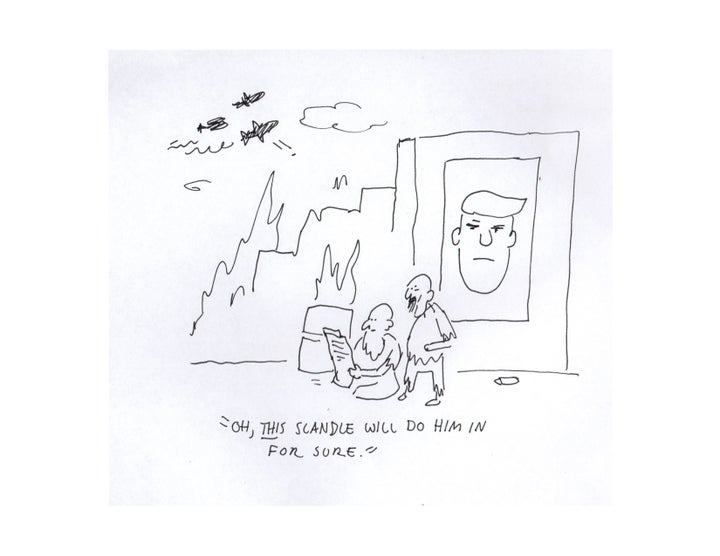
To start off: Where are you from? How long have you been drawing comics? What makes you laugh?
I am a native New Yorker and currently live in Brooklyn. I have been drawing since conception, but only recently drawing cartoons. Lots of things make me laugh. I like all kinds of jokes. I think if you try out a joke and no one laughs, just say it again eight or nine times. That usually works.
Tell me a little about your drawing/writing rituals. Do you keep a notebook with you at all times or do you have more specifically roped off drawing time?
I carry around a sketchbook, and generally try to think up several cartoons before I start drawing. My days are usually split up into thinking/reading/sketching days and drawing days. It’s sort of like I build enough input to start the output. Sometimes I do both in one day but I find the process for each requires a lot of time.
How does a cartoon idea first come to you ― a joke? An image? A nightmarish scenario that you just feel you need to address?
All three! The joke is always somewhere buried under all of that, so it’s just a question of digging around my mind until I strike funny. There’s more than one way to find the joke, so I explore all possibilities. The political jokes begin with a specific topic I want to explore. Then I’ll think of anything that’s connected to the topic, either visually or some sort phrase or word. Emma Allen, the cartoon editor at The New Yorker, told me my jokes work best when I take something everyone has seen and take it to surreal places. That acts as the framework of my thinking. A personal connection is key, too. If I can find a way to make fun of myself, that generally means it will resonate with people.
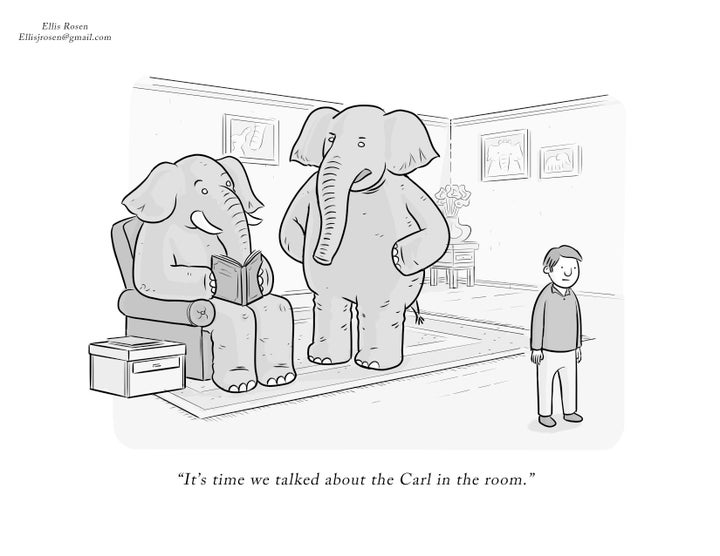
Do you have specific criteria for what qualifies a successful cartoon?
It’s not so clear cut, but often a joke works best if it has a sharp, easily identifiable tone within the caption. If you can hear the voice of the character speaking, that’s good. A good cartoon usually illustrates a story that led up to the scenario. There are exceptions to this, of course, and sometimes a silly image is enough to get a laugh. I have one cartoon ― it’s two elephants in a living room. One elephant says to the other, “It’s time we talked about the Carl in the room.” It’s not a great joke, it’s just a reverse of the common “elephant in the room” axiom. But the picture makes it better. Carl, with his blank expression, staring at nothing, is a funny enough image to make the joke work.
On average, how long does a comic take to finish? What does the editing process look like?
It depends on the drawing. One fun thing about cartoons, comics and illustration is that the drawing is dependent on the concept. So if you have an idea that involves an image of a person doing yoga on top of a horse, you have to draw a person doing yoga on top of a horse. Because of that, some drawings are easier than others. A simple drawing of two people walking down the street might take two hours. An astronaut riding a unicorn on top of a building looking down 100 stories into a large metropolis will take longer. All of the editing is done as the picture is made. I work digitally to speed the process up, but if I haven’t drawn a certain pose or object it might take a long time for me to get it right.
Can you share some comic concepts that didn’t end up coming together or making the cut?
I have a few favorite rejected cartoons. One is a bear at a cocktail party talking with a man. The man says, “You probably get this all the time but ― help, help, a bear.” I liked that one because it combines the casual language of social events with the fear of running into a dangerous animal. It also makes fun of a common social situation, when someone asks you a common question because of your profession, or in the bear’s case, entire being.
Another one I like is an image of a magician, tied up and being held up by rabbits who are walking towards his hat. Other rabbits surround him, chanting “In the hat! In the hat!” I like this one because it tells a story with only a little information. I was proud of the drawing, too.
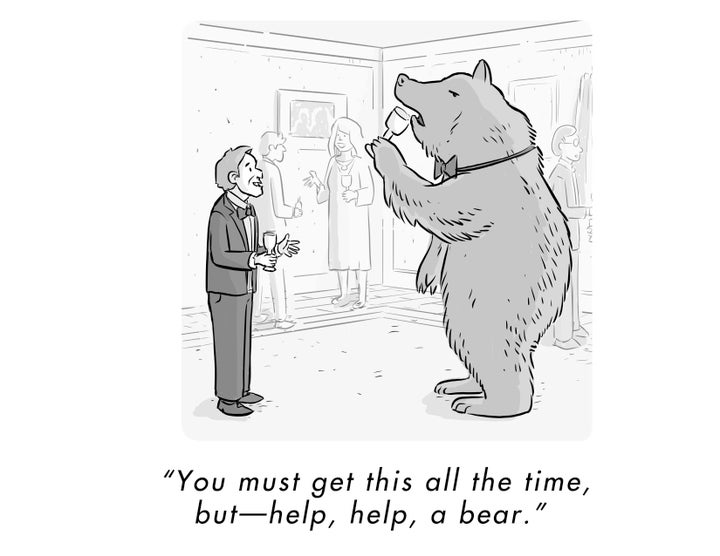
How has your career changed, if at all, since Trump’s election?
Absolutely, it has changed. I would like to meet the cartoonist whose career hasn’t. I have been fortunate enough to get a chance to draw daily cartoons at The New Yorker. These cartoons are mostly overtly political, and I have sold two. They both got lot of attention because anything even remotely political will get people’s attention. It’s nice that a lot of people have seen it and liked it, but what I really love is my political cartoons serve a second purpose: that of calling out those in power and their policies that I find abhorrent.
Do you have any wisdom or go-to tips for balancing the humor and the tragedy of this administration?
Stick to the emotions. Politics is about people, first and foremost, and it is the people who will be affected by the acts of politicians. Pay attention to how your friends and family feel about what’s happening to them, and don’t stop there. Dig until you get the “why”s and “how”s of a feeling. Listen to your own feelings too, and don’t be scared to make fun of them.
One cartoon that I like depicts two people, hiding on a rooftop in a dystopian future where Trump has become a big-brother dictator. One of them is reading a newspaper and says to the other, “This scandal will do him in for sure.” This cartoon came from making fun of my own wishful thinking, constantly hoping that the next big scandal will actually affect Trump. My emotions were giving me hope, despite the fact that Trump seems to survive everything. That dichotomy is where jokes are born.
Do you have specific subjects you like to draw to clear your mind from political madness?
Not really. Dogs, maybe. Animals in general. They are fun to draw and are inherently funny. I have been wrestling with local politics as well. The New York City subway system is a mess and so I have been taking out my frustrations by drawing lots of cartoons about it. In general I wouldn’t say that drawing cartoons about political madness adds to my stress. If anything, it’s a way to relieve it. That’s what cartooning is, expressing yourself through art and humor and declaring your emotions to the world.
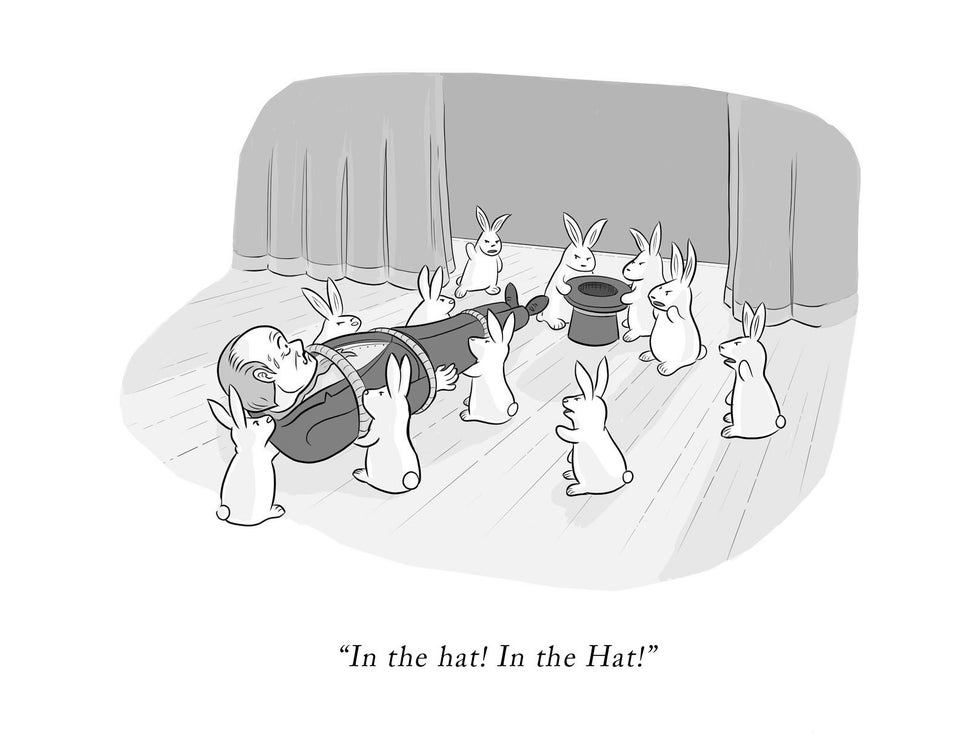


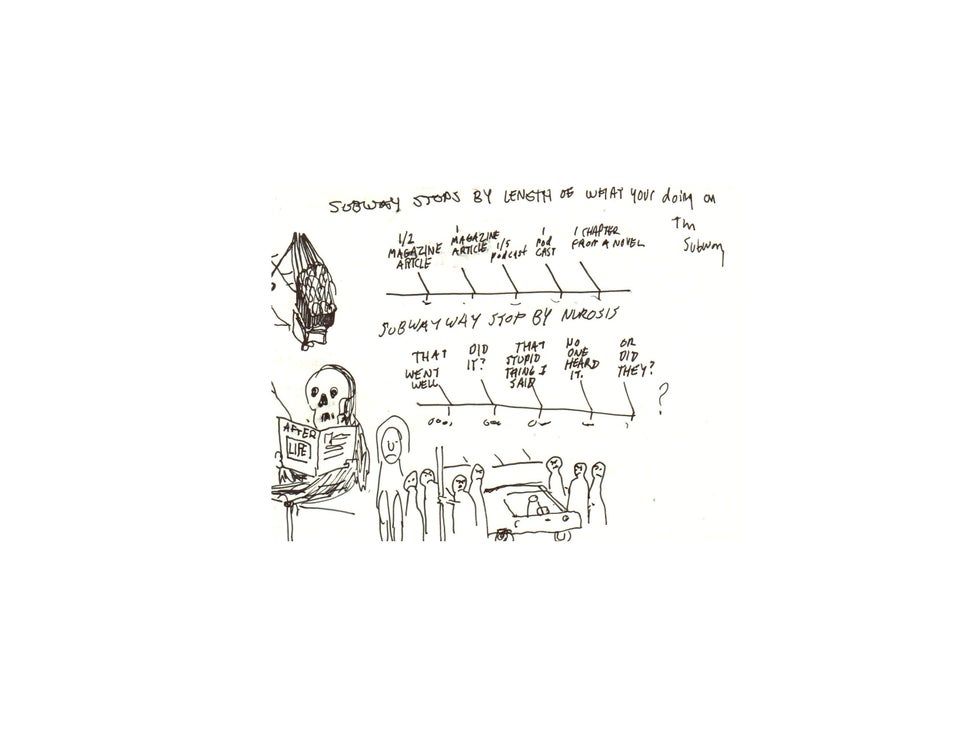

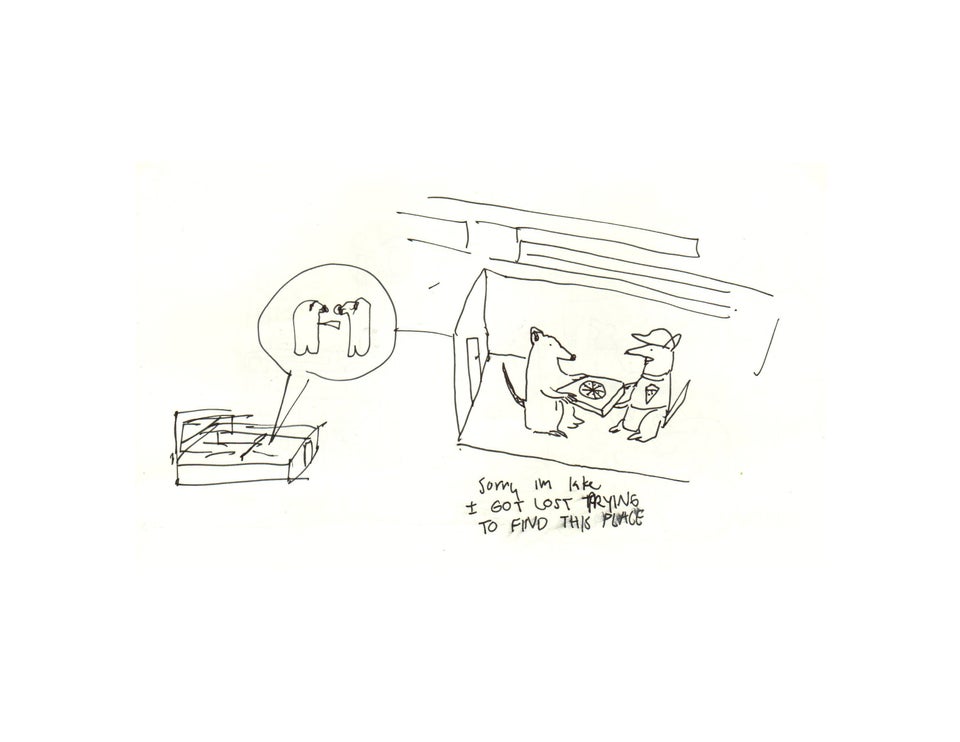
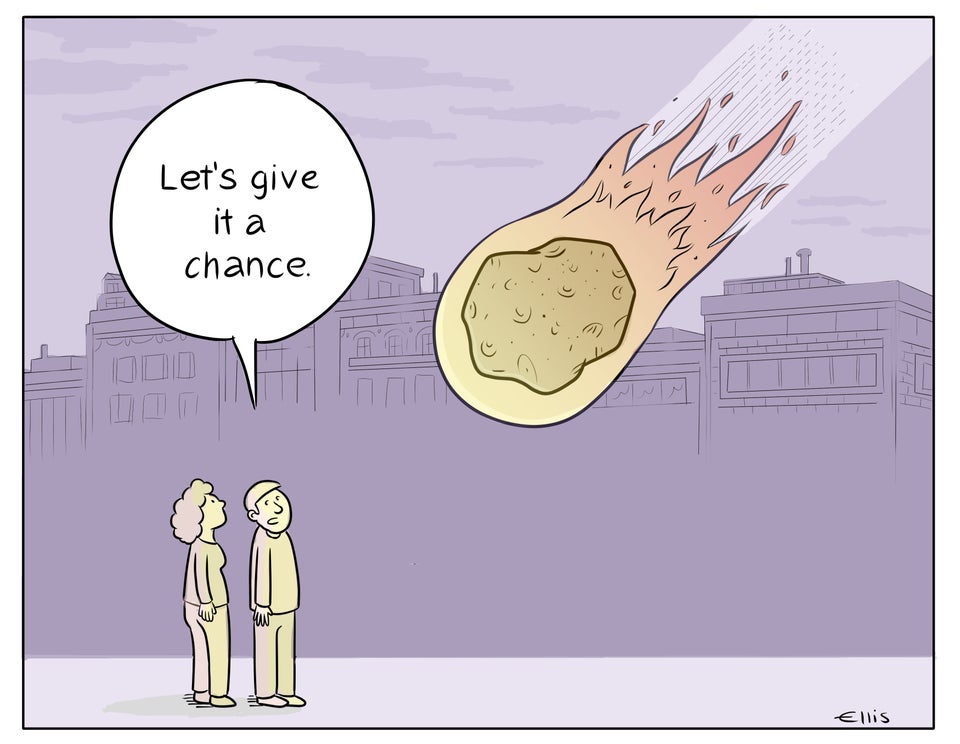

Welcome to Battleground, where art and activism meet.
